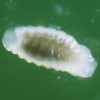 Trichopria columbiana is a parasitoid of Hydrellia fly species. Depending on the ecological role of the host species, it can have a positive or negative effect on biological control. Some Hydrellia species feed on the invasive aquatic weed hydrilla. After its introduction into the U.S. by the aquarium industry in the 1950s (Langeland 1996), various control methods, including biological control, were developed and used to manage infestations. Classical biological control studies were initiated in the 1970s, which led to the release of four insects in the U.S., two of which were the leaf-mining ephydrid flies, Hydrellia pakistanae and Hydrellia balciunasi. Despite successful establishment and range expansion of the Asian hydrilla leaf mining fly, Hydrellia pakistanae, population levels of the insect and associated plant damage have remained low. One of the potentially limiting biotic factors is parasitism by the native endoparasitic wasp Trichopria columbiana. This 6-page fact sheet was written by Byron R. Coon, Nathan E. Harms, Michael J. Grodowitz, Emma N.I. Weeks, and James P. Cuda, and published by the UF Department of Entomology and Nematology, June 2014.
Trichopria columbiana is a parasitoid of Hydrellia fly species. Depending on the ecological role of the host species, it can have a positive or negative effect on biological control. Some Hydrellia species feed on the invasive aquatic weed hydrilla. After its introduction into the U.S. by the aquarium industry in the 1950s (Langeland 1996), various control methods, including biological control, were developed and used to manage infestations. Classical biological control studies were initiated in the 1970s, which led to the release of four insects in the U.S., two of which were the leaf-mining ephydrid flies, Hydrellia pakistanae and Hydrellia balciunasi. Despite successful establishment and range expansion of the Asian hydrilla leaf mining fly, Hydrellia pakistanae, population levels of the insect and associated plant damage have remained low. One of the potentially limiting biotic factors is parasitism by the native endoparasitic wasp Trichopria columbiana. This 6-page fact sheet was written by Byron R. Coon, Nathan E. Harms, Michael J. Grodowitz, Emma N.I. Weeks, and James P. Cuda, and published by the UF Department of Entomology and Nematology, June 2014.
http://edis.ifas.ufl.edu/in1040